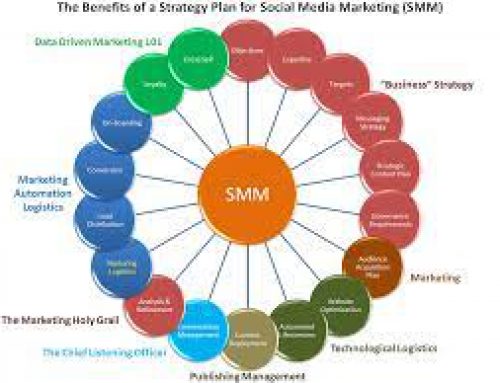
We’ll go over some new social media tricks for maximising the output of your social media marketing efforts in this post.
Now, let’s get started on the tricks without any further thought.
Make A Strategy For Each Social Media Platform.
Before creating an account on a social media channel, make a proper social media plan. There are a variety of social media platforms, such as Twitter, Facebook, LinkedIn and Instagram, and each must be managed differently. Make a plan that outlines your objectives, target audience, posting schedule, content type, and success metrics. You’ll be able to figure out how to make the necessary changes depending on the channels if you establish a strategy.
Research Your Competitors To Spot Gaps, Flaws, And Successes.
Take a look behind the scenes of your rivals’ social media accounts to see what’s working and what’s not. First, discover how your rivals’ audiences engage with different content using tools. Then, make a better version of what’s already working.
You may also use competitor analysis to find gaps, such as typical difficulties your audience experiences that your rivals aren’t addressing or essential subjects that your competitors aren’t covering. One of the most successful methods to establish your brand as an authority and begin building a dedicated social media following is to give your audience something they can’t get anywhere else.
Choose The Best Days, Times, And Types Of Content For Each Social Media Network.
You may drill down to determine what days and hours your target audience is most active on each platform. This is where you create your action plan. First, create a detailed analysis of each of your target social media platforms, including research into when your target audience is most active and the types of content that are most likely to connect with that audience and are compatible with the social network’s format. For example, you couldn’t submit 1,000-word content on Twitter, but on LinkedIn or even Facebook, you may do so.
Maintain Consistency by Creating a Social Media Calendar.
Create a social media calendar based on your findings from the previous stage to plan posts across each social network on the best days and hours to reach your target audience. It’s similar to an editorial schedule, except it’s only for social media. You’ll want to add information like the topic for each post, the content structure, and any assets you’ll need to produce ahead of time.
Setting up a social media calendar can help you manage your social media marketing process and remain on track, often updating to maintain momentum and provide fresh, exciting material to keep your audience interested. In addition, knowing what content you need to develop ahead of time makes it easier to collaborate with graphic designers, content marketers, and any other team members that need to be involved at any point in the process. You should also keep the next point in mind while making your social media calendar.
Use Multiple Channels to Promote Your Content
Each social media network is unique, necessitating a unique strategy for social media marketing. However, that doesn’t mean you can’t advertise the same material across all of your platforms; it only takes a few modifications to your images and written content to make it unique.
You must consider the graphic requirements and character limitations of each platform and the preferences of your target audience. For example, your Facebook and Instagram audiences may be more likely to engage with a video. Still, your Pinterest audience may be more likely to click on a bright infographic or eye-catching photo. So, mix and match photos, videos, and textual content to create unique posts for each social media channel to repurpose your content into numerous formats and get more mileage out of every asset you generate.
Pay Attention to Your Audience’s Needs
Every brand has to do market research. After you’ve listened to your audience, give them what they desire. This will make you more relevant to them and increase your industry authority.
Find out where your target audience is.
Look at the most popular platform where your target audience gathers and spends most of their time there. Of course, you can’t be on every platform at the same time. As a result, locate your target audience and meet them where they are.
Use Tools for Social Media Marketing
Buffer, BuzzSumo, HootSuite, and IFTTT are just a few of the tools that may help you generate high-quality content, attract new users, boost interaction, and more. It will also assist you in creating, planning, and scheduling content for your social media content calendar.
These resources might also assist with:
- Obtaining leads
- Creating email distribution lists
- Identifying a target market for your business
- Creating a buyer persona is an essential step in the process.
- Giving feedback on what works and what doesn’t
Use Social Media Contests To Promote Your Postings.
Another big benefit of using social media is that it allows businesses to communicate with their consumers. Contests, such as the giveaway, are a superb method to go about it, and they’ll also help you get a lot of people to participate. In addition, offering special freebies and discounts to audience members may add value to the social media channel and encourage people to follow the page.
Visual Storytelling
You can quickly share your message with your audience, connect with them, capture the attention of potential consumers, and much more with the assistance of pictures and videos. Your material may be fascinating and enjoyable to anybody viewing, owing to the medium’s simplicity and no language limitations. Visual information, moreover, is more likely to become viral.
A/B testing
A/B testing entails comparing copy, creatives, CTAs, and other elements of social media postings. A/B testing allows you to evaluate what works best for your business by considering how viewers might react to different content types. For example, a/B testing may be done by adjusting location, age, education, gender, audience interest, and so on.
Include a Powerful CTA
A great call to action is essential since it guides and inspires potential consumers to take the next step. For example, this can encourage potential consumers to make a purchase. Similarly, you may create an eye-catching call-to-action and share it on your social media pages. This will motivate your followers to take the necessary step to purchase your product or service.
Before using a hashtag, do some research on it.
Check the definition of each hashtag three times before using it to avoid embarrassment and perhaps destroying your reputation since you didn’t understand what it meant.
Paid Ads
You may locate, target, and reach your target audience by paying for advertisements. It may help you quickly contact your target audience, increase the visibility of your business, deliver exceptional results, and much more. The pay-per-click strategy ensures that you can optimise targeting by managing who sees your ad, that you have a strong return on investment, and so on. You may also target the audience depending on various characteristics such as age, gender, region, and so on.
Influencers and Communities
Entering communities allows you to engage with people who share your interests and other businesses in your field. As a result, you may also establish yourself as an industry expert. In addition, active engagement aids in the development of an audience that might potentially become brand ambassadors.
Collaboration with influencers may help your brand reach a whole new audience. Seeing the influencer work with your business will also assist in increasing the authenticity of your brand and the audience’s belief in it.
Exceptional Client Service
Positive reviews are excellent, but if your consumers have had bad experiences with your products or services, they will likely come out to you via social media. The key is to be prepared to interact with them and discover solutions to their problems as soon as possible. Allow them to provide input, address any issues they may have, and encourage them to share their ideas with their network.
Keep A Record Of These Tips And Tricks And Duplicate Them.
When creating a campaign, a clever marketer knows their data and adheres to social media realities. Track your results and then do more of what’s working. Tracking vanity metrics like followers isn’t enough; you also need to know your engagement statistics and potential reach if you want to grow your efforts potentially.
Last Thoughts
The key to social media reach is the same as the key to good search engine rankings. It’s all about optimisation, user experience, and high-quality content. You’ll see the pieces start to fall into place if you start thinking about your social media efforts in the same way you think about your SEO efforts.




Leave A Comment